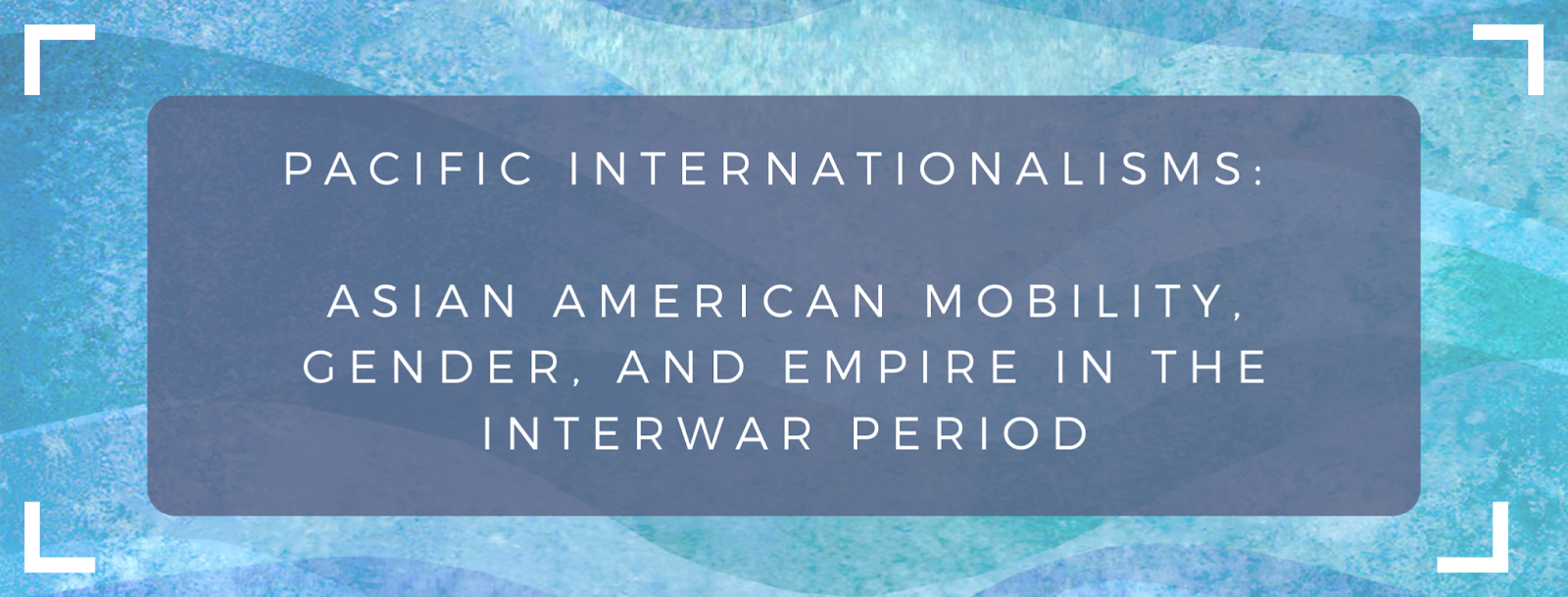
In Progress: Book Manuscript
Pacific Internationalisms: Asian American Mobility, Gender, and Empire in the Interwar Period
Pacific Internationalisms offers the first full-length monograph of Pacific internationalism between World War I and World War II, centered on the networks and participation of Asian American women. To underscore how Pacific internationalism was forged against the backdrop of Asian exclusion, I situate this study within broader histories of American immigration history that have traced how exclusion was codified in law and legislation during the nineteenth and twentieth centuries.
Analyzing Pacific internationalism as a cardinal ideology helps us to understand the dueling impulses of exclusion and inclusion at work in these decades. U.S. immigration policies, including both the 1917 Asiatic Barred Zone Act and the subsequent 1924 Immigration Act, which established hierarchical immigration quotas by nationality, came down squarely on the side of exclusion. Yet many individuals throughout the US and the Pacific turned to liberal inclusion, founding a proliferation of transnational movements that sought to bring together diverse people and nationalities despite lines of difference. These included international student exchanges, international conferences, goodwill tours, and the rise of people-to-people intercultural diplomacy.
While recent debates in Asian American studies have focused on transnationalism and forms of liberal rights and belonging, Pacific Internationalisms demonstrates that internationalism was a central strand of thought among Asian and American thinkers in the first half of the twentieth century. The histories of Pacific internationalism that constitute this book continued to inform the region, and the United States’ engagement with Asia and the Pacific long after the interwar period. The Pacific remained a site of imperial domination, racial exclusion, and anticolonial resistance—but it was also understood as a place where, with help from new networks and organizations, people could envision and forge alternative modes of belonging.

Second Book Project
Racialized Contagion and Care: Tuberculosis and Wartime Japanese American Incarceration
A few months into the pandemic, my 98-year-old grandmother shared that COVID-19 brought back memories of working as a nurse at Lēʻahi Hospital in Honolulu. My grandmother, who suffered hearing loss from a plantation accident when she was younger, had failed a lipreading test required by other hospitals. This, combined with the fact that she was Japanese American, meant that Lēʻahi Hospital, Hawaiʻi’s sole tuberculosis facility was the only hospital that would hire her. Her position at Lēʻahi resulted in her caregiving role for tuberculosis patients and involved close and prolonged contact with them. Tuberculosis, a contagious respiratory illness often linked with immigrant groups, has been associated with stigma, particularly within the Japanese American community. My initial query into my grandmother’s experiences as a wartime tuberculosis nurse in Hawaiʻi gradually evolved into a broader examination of Japanese American tuberculosis caregivers and patients during World War II.
